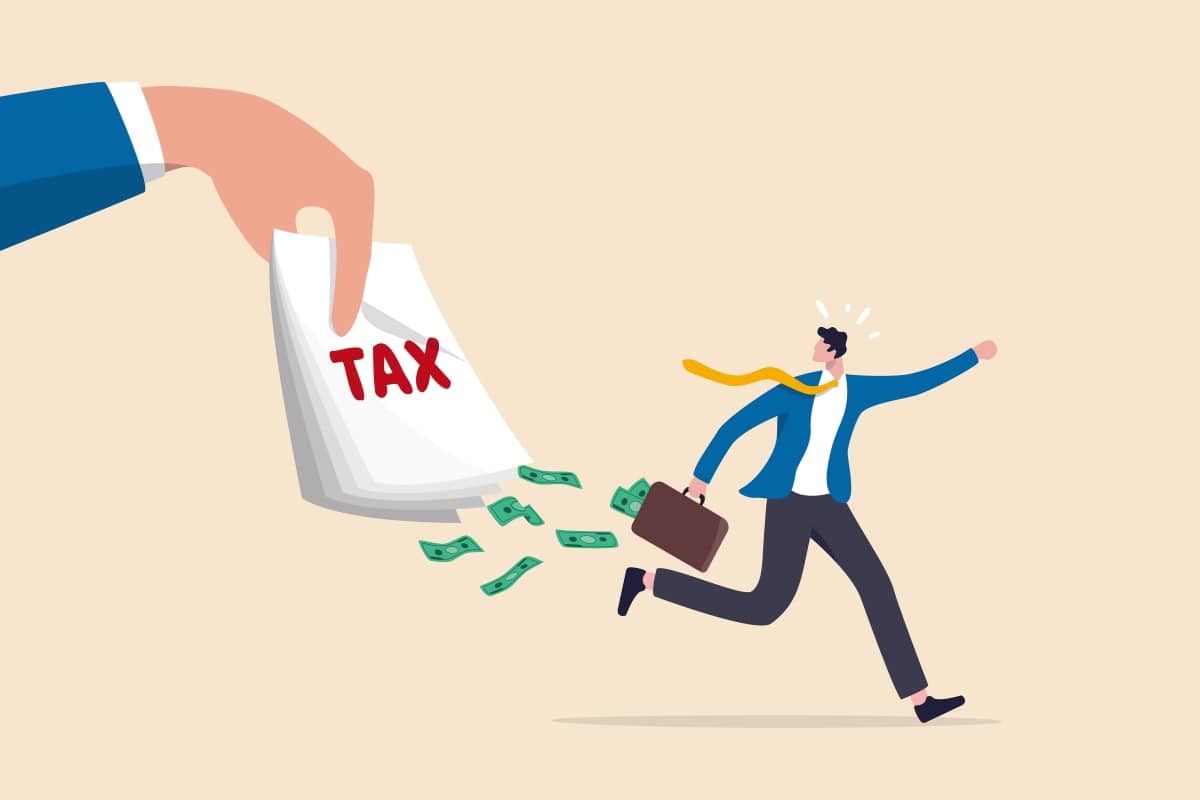Finding ways to minimize tax payments is a goal for many individuals and businesses. Luckily, the U.S. tax code offers several legal strategies to help reduce taxable income, allowing you to retain more of what you earn. With careful and professional tax planning, there are multiple ways to lower your tax bill within the bounds of the law.
In this article, we’ll explore 7 ways to legally avoid paying taxes so you can save money and reach your financial goals with greater confidence.
Key Takeaways
- Taking advantage of various tax-saving opportunities—such as contributions to specific accounts, eligible deductions, and charitable donations—can make a notable difference in reducing taxable income and supporting long-term financial goals.
- Thoughtful planning, including selecting tax-efficient investments and timing income and expenses, helps optimize savings over time while staying compliant with tax laws.
- By understanding and utilizing legal strategies, taxpayers can achieve a greater degree of financial control, keeping more of their earnings and reducing the impact of taxes on their overall financial plan.
Understanding Federal Income Tax
The federal income tax system in the U.S. operates on progressive tax rates that increase with higher income levels. This means that as your income grows, so does the percentage you pay in taxes. Grasping the basics of federal income tax helps in planning effectively and reducing tax liability.
Taxable income is generally all income received by an individual or business unless specifically exempted by legislation. This includes wages, salaries, dividends, interest, and capital gains. Knowing what counts as taxable income is the initial step in managing your tax responsibilities.
Importance of Accurate Reporting
Accurate reporting helps avoid penalties and ensures compliance with tax laws. Misreporting income can result in fines and audits, highlighting the need to understand taxable income and report it correctly.
It’s important to note that taxable income is not the same as total income. Rather, it’s calculated by subtracting deductions and exemptions from your total income. This percentage is then used to determine what income tax is owed to the IRS.
Understanding the difference between taxable income and total income can help us better plan for taxes and minimize tax liabilities.
7 Ways to Legally Avoid Paying Taxes
Reducing the amount you pay in taxes is a goal for many taxpayers, and there are various strategies to achieve this. From maximizing contributions to retirement accounts to leveraging fringe benefits and donating to charity, there are numerous ways to reduce your taxable income and lower your overall tax bill.
One of the most effective strategies is to contribute to retirement accounts. These contributions can significantly decrease your overall tax obligations. Additionally, donating to charity and taking advantage of tax credits can also help minimize your tax burden.
Using these seven strategies can help you avoid paying taxes legally and retain more of your earnings.
1. Max Out Retirement Accounts and Employee Benefits
Contributions to retirement accounts like a 401(k) and IRA can lower taxable income. For 2024, the 401(k) contribution limit is $23,000, with an extra $7,500 for those over 50.
Fringe benefits like health insurance and flexible spending accounts can also reduce taxable income. Maximizing these benefits and retirement contributions helps minimize tax burden.
Utilizing 401(k) and Other Retirement Plans
Contributions to 401(k) and other retirement plans are tax-deductible, lowering taxable income. These plans offer tax-deferred growth, aiding in retirement savings while reducing tax liability.
Self-employed individuals can invest in a SEP IRA, contributing up to 25% of net earnings, capped at $69,000. The annual IRA contribution limit for 2024 is $7,000, providing more tax reduction opportunities.
Leveraging Fringe Benefits
Fringe benefits like health insurance and flexible spending accounts reduce taxable income and are tax-free, helping individuals save on taxes. Employers often include these benefits in compensation packages.
Employers may offer tax-exempt fringe benefits, contributing to overall tax savings.
Contribute to a Health Savings Account (HSA)
Contributions to a Health Savings Account (HSA) are tax-deductible, reducing taxable income. HSAs offer tax-free growth and withdrawals for qualified medical expenses.
Individuals with high-deductible health plans can contribute to HSAs, enhancing tax efficiency.
Benefits of HSAs in Tax Planning
HSAs offer tax-deductible contributions, tax-free growth, and tax-free withdrawals, helping save for medical expenses and reducing out-of-pocket costs.
HSAs can complement other tax-advantaged accounts like 401(k) and IRA. Contribution limits for 2024 are $4,150 for individuals and $8,300 for families.
2. Donate to Charity
Charitable donations are tax-deductible, lowering taxable income. Itemized deductions for these donations can be claimed on tax returns, offering tax benefits.
There are rules, however, to what counts towards your donation deduction. First, the amount of donations you can deduct is capped at a max of 60% of your adjusted gross income (AGI). Your AGI, for reference, is not your taxable income. It is your income before taking standardized, itemized, or business deductions into account. The type of charity and donation can also determine how much may be deducted.
Furthermore, you can only use donations to a qualifying organization, which will have a 501(c)(3) designation. Not all nonprofits have this qualifier, so it’s always important to double-check before making a donation. The IRS has a database of tax-exempt organizations to make this process easier.
Tax Benefits of Charitable Donations
Charitable donations reduce taxable income and can offer tax deductions or credits. Contributions can be in cash, securities, or other assets, providing significant tax benefits while supporting important causes.
3. Business-Related Tax Strategies
Small business owners can manage tax liabilities by deferring income and accelerating expenses. Tax deductions for small businesses can significantly reduce taxable income, leading to substantial savings.
Starting a business offers tax benefits, like deductions for business and startup expenses.
Start a Business
Starting a business offers various benefits, including tax deductions for business expenses and additional income. Ideally, tax deductions will offset business income, therefore reducing taxable income.
To fully leverage business expenses, you’ll need to accurately track them and report your expenses on your tax return. Inaccurate tracking results in penalties and fines, so it’s common for many business owners to work with an accountant or bookkeeper to ensure consistency and accurate reporting.
Tax Benefits of Business Ownership
Owning a business offers various tax benefits that can significantly reduce taxable income and overall tax liability, including deductions for home office costs, travel, and marketing expenses.
Business owners can utilize retirement plans like SEP-IRAs or solo 401(k)s, which have higher contribution limits and are tax-deductible, further reducing taxable income and tax liability.
Business owners can also claim self-employment tax deductions and deductions for self-employment health insurance, which can be claimed on tax returns.
4. Invest in Municipal Bonds
Investing in municipal bonds offers tax-free income, as they are exempt from federal income taxes. These bonds can be used to finance public projects, such as infrastructure and education. By investing in municipal bonds, you can earn tax-free income while supporting community development.
Tax-Free Income from Municipal Bonds
Municipal bonds are a unique investment option that can provide tax-free income, making them particularly attractive for individuals in higher tax brackets. These bonds are issued by local governments to fund public projects like schools, roads, and hospitals. The interest earned on municipal bonds is typically exempt from federal income tax, and in some cases, it may also be exempt from state and local taxes.
Investing in municipal bonds can be a strategic way to earn tax-free income, thereby reducing your overall taxable income.
However, it’s important to understand the risks and benefits associated with these investments. While the interest is tax-free, the principal amount invested may be subject to taxes when sold or redeemed.
Before investing in municipal bonds, it’s advisable to conduct thorough research and consult with a fiduciary financial advisor or tax professional. This will help you understand the tax implications and ensure that municipal bonds align with your overall financial strategy.
5. Tax Credits and Deductions
Tax credits and deductions are effective tools for reducing tax liability. Deductions lower taxable income, while credits offer a dollar-for-dollar reduction in tax owed, sometimes resulting in a refund if they exceed tax liability.
Effectively using these credits and deductions can lower your tax bill and potentially increase your refund. Here are some of the most beneficial options available.
Claim Tax Credits
Tax credits, such as those for child care and education, can significantly reduce tax liability. The Child Tax Credit, for example, lowers tax liability for those with qualifying children under 17, offering substantial savings.
Refundable tax credits, like the Earned Income Tax Credit, can result in a refund even when no taxes are owed, benefiting moderate- and low-income workers.
Overview of Available Tax Credits
Tax credits are available for various expenses, such as education costs, child care, and energy-efficient home improvements. The American Opportunity Tax Credit, for example, can provide financial relief for educational expenses during the first four years of college.
Exploring all available tax credits, including family-related, education-related, and energy-efficiency credits, can help reduce your overall tax burden significantly.
Claim Self-Employment Tax Deduction
Self-employed individuals can claim the self-employment tax deduction to reduce taxable income and ease their tax burden.
By deducting business expenses, self-employed individuals can lower their tax obligations and maximize savings.
Eligibility and Benefits
The self-employment tax deduction benefits those who earn income through self-employment by significantly reducing taxable income and tax liability.
Claiming this deduction helps manage tax obligations more effectively.
6. Minimizing Income Tax
Various strategies can reduce taxable income and overall tax burden. Effective tax management involves careful planning and timing of income and expenses.
Deferring income and accelerating expenses can lower your current year’s taxable income. Additionally, tax-loss harvesting and converting traditional IRAs to Roth IRAs can optimize tax liability.
Understanding long-term capital gains and strategic investing can offer significant tax advantages. Here are these strategies in more detail.
Time Year-End Income and Expenses
Timing year-end income and expenses can minimize tax liability. Deferring income and accelerating expenses can lower current year’s taxable income, requiring accurate planning and financial understanding.
Maximizing workplace retirement contributions and using tax-loss harvesting at year-end can offset capital gains and reduce overall tax liability.
Strategies for Optimizing Tax Liability
Deferring income and accelerating expenses are key strategies for reducing taxable income and minimizing tax liability. Tax-loss harvesting offsets capital gains with recognized losses, reducing your tax burden.
Converting a traditional IRA to a Roth IRA can offer tax-free withdrawals in retirement, depending on tax bracket management.
Utilize Long-Term Capital Gains
Long-term capital gains offer lower tax rates compared to ordinary income. Holding investments for over a year qualifies you for these rates, reducing tax liability. They can also offset capital losses, lowering taxable income and overall tax burden.
Tax Benefits of Long-Term Investing
Long-term investing offers tax advantages that reduce overall tax burden. Holding investments for more than a year qualifies for lower capital gains tax rates, benefiting high-income individuals.
Long-term investing also allows for the deduction of investment losses, offsetting other capital gains and reducing taxable income. This is particularly beneficial during market downturns, mitigating the impact of losses on your tax bill.
7. Avoid Common Tax Mistakes
Avoiding common tax mistakes ensures compliance with tax laws and minimizes tax burden. Filing electronically and using reputable tax preparers can prevent common errors.
Planning for taxes ahead of time can help you avoid errors in your returns—essential for avoiding costly penalties, fines, and potential audits. Mistakes on tax returns are common, with over 2.6 million errors in 2022 alone.
Importance of Accurate Tax Planning
Accurate tax planning is crucial for minimizing tax liability and avoiding penalties. Working with a tax professional ensures accurate reporting of income and deductions.
Effective tax planning can lead to significant long-term savings by identifying tax-saving opportunities and avoiding common filing mistakes.
How to Avoid Underpaying Taxes
Accurate tax planning is essential for avoiding underpayment of taxes. Inaccurate tax planning can result in penalties and fines. Monitoring income throughout the year and reviewing tax calculations carefully can help prevent underpayment penalties.
Tax planning should be done in conjunction with a tax professional to ensure all income sources are accurately reported and to avoid underpayment issues.
Strategies for Minimizing Tax Burden as a High-Income Earner
High-income earners can minimize their tax burden by utilizing tax-advantaged accounts, such as 401(k) and IRA. Claiming tax credits and deductions can also help reduce overall tax liability. Utilizing tax-deferral strategies and ensuring all income sources are accurately reported can greatly reduce the immediate tax burden for high-income earners.
Get Help to Avoid Paying Taxes
In summary, there are numerous strategies available to legally avoid paying excessive taxes. By understanding the federal income tax system, accurately reporting taxable income, and utilizing tax credits, deductions, and various investment strategies, you can significantly reduce your tax liability.
Implementing these strategies requires careful planning and, often, the guidance of a tax professional. By taking proactive steps now, you can ensure a more favorable tax outcome and keep more of your hard-earned money.
At First Financial Consulting, we have decades of experience in utilizing tax strategies to help our clients. Tax planning is a crucial part of every plan we implement for our clients. If you have any questions or want to learn more about what we do, use the link below to schedule your complimentary consultation.
Greg Welborn is a Principal at First Financial Consulting. He works with high-net-worth individuals and privately-owned businesses on financial planning issues including investment, retirement, and tax planning, among others.
Greg Welborn is a Principal at First Financial Consulting. He works with high-net-worth individuals and privately-owned businesses on financial planning issues including investment, retirement, and tax planning, among others.
FAQ | How to Avoid Paying Taxes
Taxable income is the amount of income that is subject to federal income tax, encompassing earnings from sources like wages, salaries, dividends, interest, and capital gains. It is crucial for determining your overall tax liability.
There are several effective ways to lower taxable income legally. Maximizing contributions to retirement accounts such as a 401(k), IRA, or Health Savings Account (HSA) is one of the most straightforward strategies, as these contributions are often tax-deductible. Additionally, you can claim eligible deductions, like charitable donations, mortgage interest, and certain business expenses if you’re self-employed. Together, these strategies help lower your adjusted gross income (AGI), which determines the basis for your tax liability.
Retirement accounts like 401(k)s, Traditional IRAs, and HSAs come with significant tax benefits. Contributions to these accounts are often tax-deductible, meaning they reduce your taxable income for the current year. HSAs provide a “triple tax advantage,” where contributions are deductible, growth is tax-free, and withdrawals for qualified medical expenses are also tax-free. Roth IRAs are another popular option for tax-free income in retirement, as qualified withdrawals are tax-free even though contributions are made with after-tax dollars.
Donations to qualified charities are tax-deductible if you itemize deductions, which can reduce your taxable income. For those over age 70½ with an IRA, Qualified Charitable Distributions (QCDs) allow you to make charitable donations directly from your IRA, reducing your adjusted gross income (AGI). This strategy can be especially beneficial in retirement, as reducing AGI may also lower taxes on Social Security benefits and impact other income-based tax thresholds.
Small business owners have access to a variety of tax deductions that can substantially lower taxable income. Common deductible expenses include office equipment, home office costs, travel expenses, and start-up expenses. In addition, business owners may be eligible for the self-employment tax deduction, which allows them to deduct a portion of their self-employment tax. Many business expenses are deductible as long as they are ordinary, necessary, and related to business activities.
Municipal bonds, which are issued by state and local governments, provide tax-free interest income at the federal level. If you live in the state issuing the bond, the interest may also be exempt from state taxes, which is especially beneficial for individuals in high tax brackets. Municipal bonds are often used to fund public projects, so by investing, you’re also supporting local community initiatives. While the principal amount may still be subject to taxes upon sale or redemption, the tax-free interest makes municipal bonds an attractive choice for investors seeking a tax-efficient income stream.
Tax credits are powerful tools for reducing tax liability because they provide a dollar-for-dollar reduction in taxes owed, unlike deductions, which only lower taxable income. Common tax credits include the Child Tax Credit, which reduces tax liability for qualifying dependents under 17, and the Earned Income Tax Credit (EITC), which benefits moderate- to low-income workers. Refundable credits, like the EITC, can result in a tax refund even if no taxes are owed. Exploring all available tax credits, including education, family, and energy efficiency credits, can provide substantial tax savings.
Self-employed individuals can leverage multiple tax deductions to optimize taxes. Commonly claimed deductions include business expenses such as equipment, marketing, office supplies, and travel. The self-employment tax deduction allows self-employed individuals to deduct half of their self-employment tax, which reduces taxable income. If you work from home, you may also qualify for the home office deduction, which allows you to deduct expenses related to a dedicated workspace within your home.
Tax-loss harvesting is an investment strategy that involves selling investments at a loss to offset gains, thereby reducing taxable income. This strategy can be particularly effective if you have capital gains from other investments, as losses can offset these gains dollar-for-dollar. Any remaining losses can offset up to $3,000 of regular income per year, with unused losses carried forward to future years. Tax-loss harvesting can be a smart move for managing tax liabilities in investment portfolios, particularly in volatile markets.


